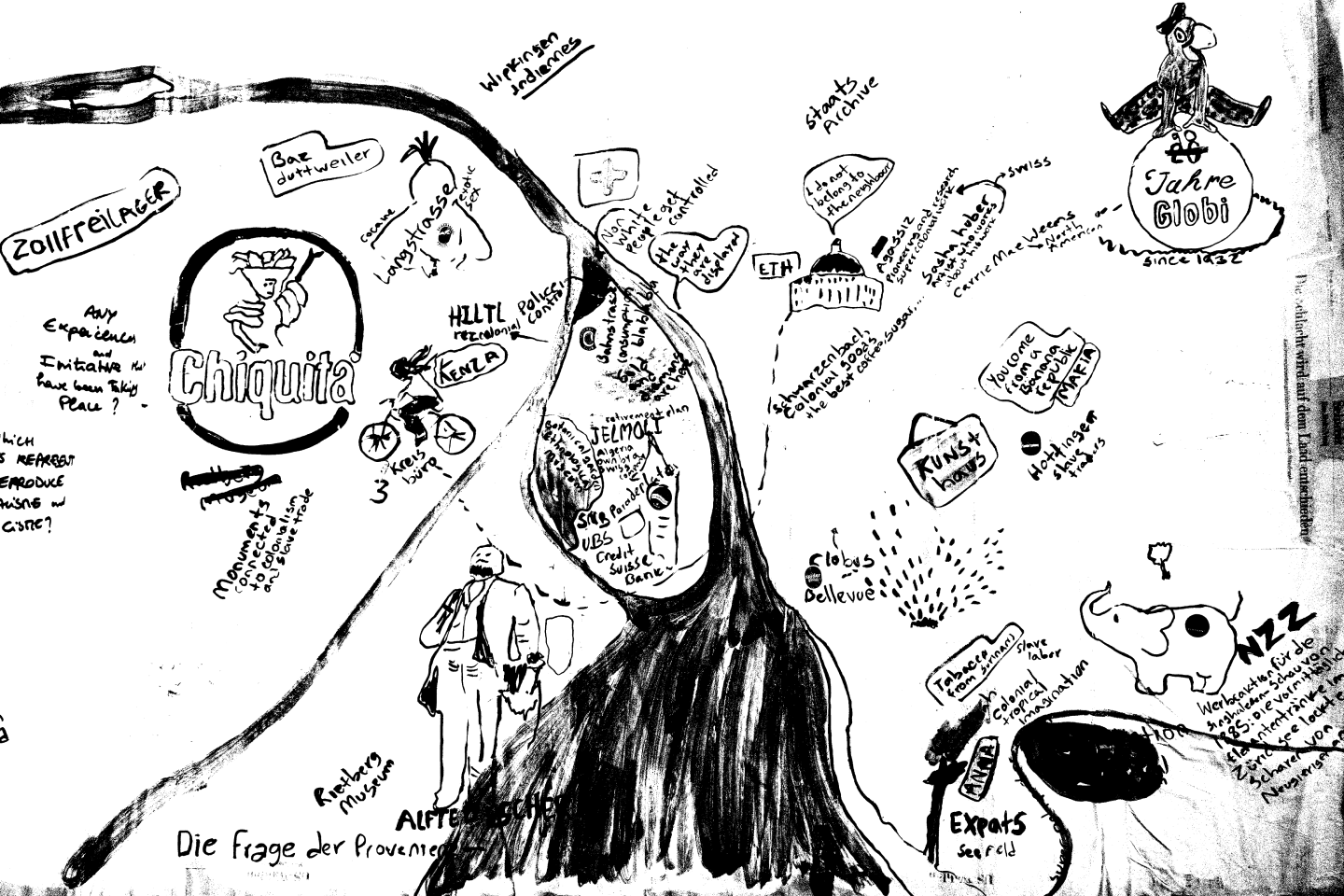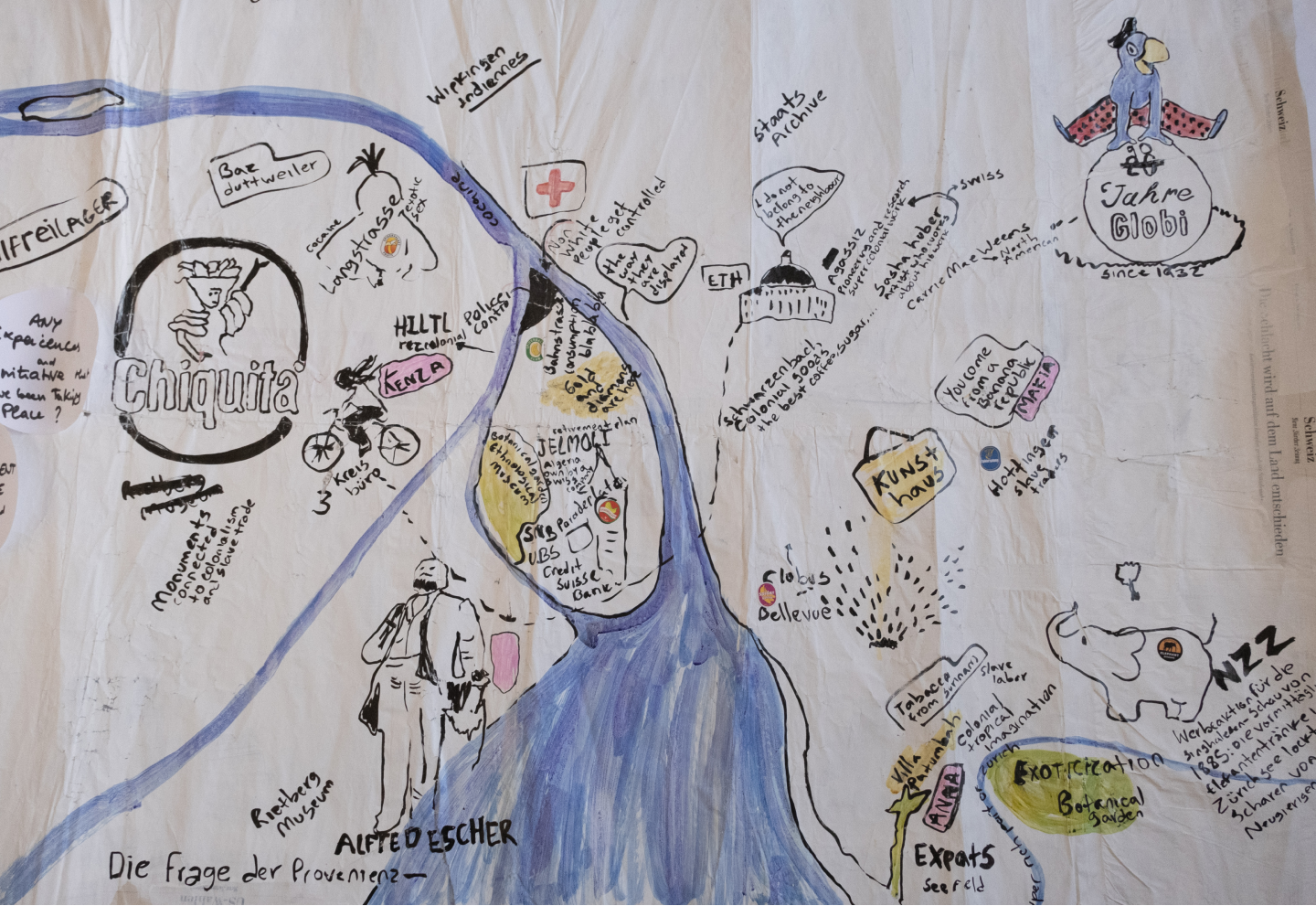Theory and method
The exercise of live mapping enables discussion on colonialism, racism, and anti-colonial resistance from a personal point of view. It’s not necessary to have profound historical knowledge since the aim is to share subjective experiences and draw on daily routines and encounters of the participants, following along their diverse routes throughout the city.
The common point of departure was the map from the project Züri für Alli. It served as a basis to activate different memories, experiences or concrete historic knowledge embedded in certain geographic locations. The simultaneity of accounts made visible historic, systemic as well as personal layers of colonialism, racism, and discrimination. It showed how intertwined they are and how colonialism is still present in our daily lives: in architecture, street names, assimilation demands, social norms, the justice and law enforcement system, etc.
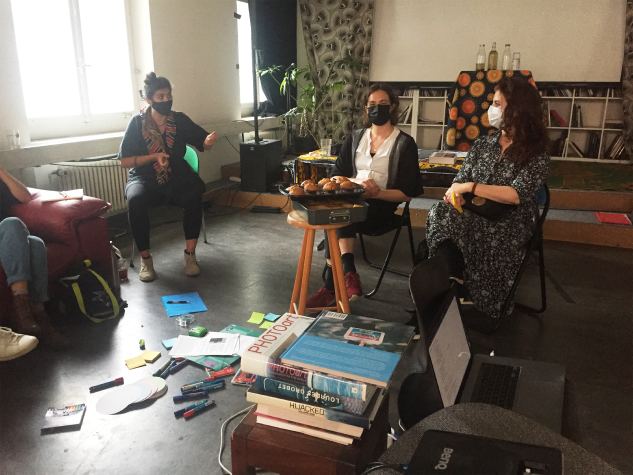


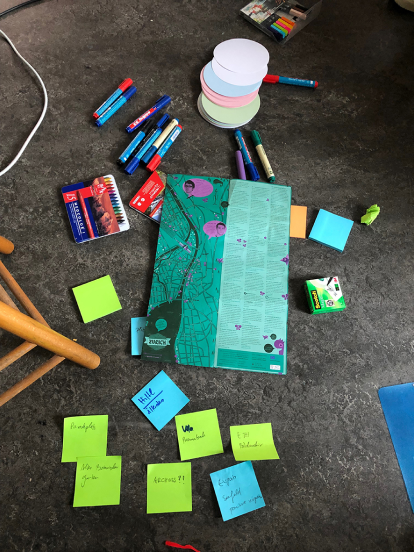
About the workshop
This workshop laid the foundation for the remapping project. We met in the context of the Farbenblind festival at Photobastei. Maria Ordoñez had prepared newspaper pages, which she painted white, to use as a background to project the map. With black ink she drew the outlines of the Züri für Alle-map. This went on to become the visual reference of the workshop and in the end, the whole project. We chose this map because it was helpful to spark memories and initiate discussions more than a geographically accurate map. This exercise helped us realize and understand how certain places are more charged than others. A few examples of this are:
- The Platzspitz-area, a place in Zurich where foreign communities are often surveilled and searched by the police.
- The Zoo of Zurich, where exotic animals from the colonies were exhibited.
- The old Botanical Garden and the Völkerkundemuseum [ethnographic museum], where colonial knowledge about exotic plants and people were presented to the public.
- Plattenstrasse 10, where in the past the colonial “Völkerschauen” [human zoo] was practiced.
- The Langstrasse [Zurichs red light district], a place where cultures merge but social disparities are also painfully visible (e.g. prostitution, exotization).
- Jelmoli [warehouse] and its connection to the Cacao trade as well as to the Basler Mission [one of the largest missions from Switzerland] in West-Africa.
- Alfred Escher statue in front of the main station and his uncle’s infamous involvement in Cuban slave plantations.
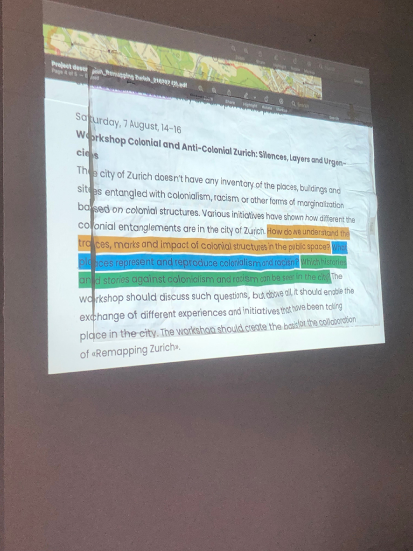
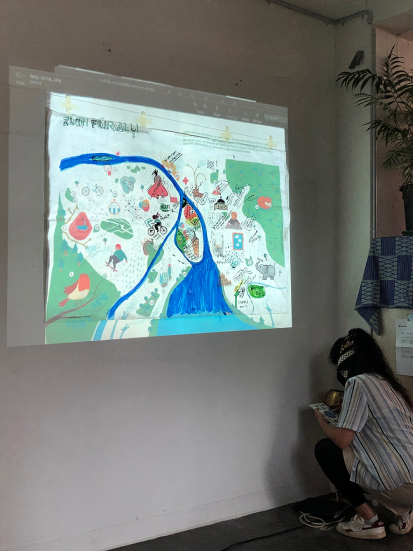
The following questions guided us through the workshop:
- Which three words do you associate with Zurich?
- What is your (emotional) relationship to Zurich?
- Do you feel welcome in Zurich?
- What are places where you have experienced instances racism, discrimination, or sexism?
- What are places where you feel completely safe?
- Which places do you know, who carry history?
- Which initiatives do you know and/or support who offer a safe space for you?


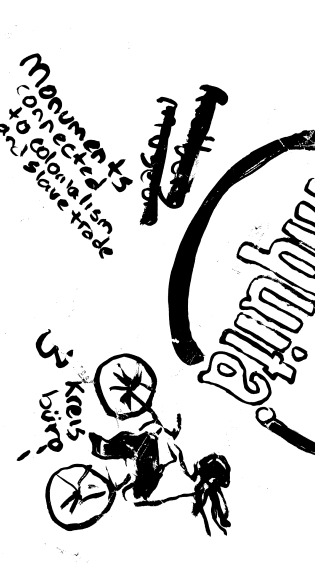
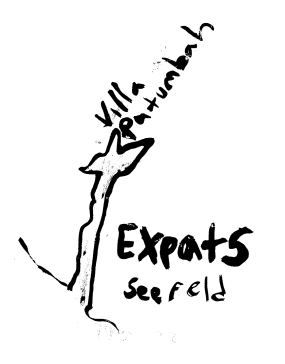
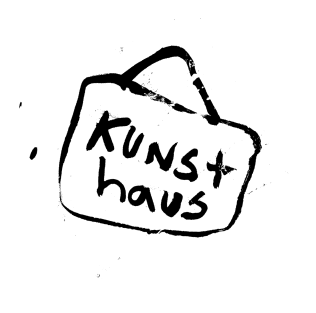

- «Die frage der provenienz»
- «Wipkingen Indiennes»
- «Paradeplatz»
- «Monuments connected to colonialism and the slave trade»
- «you come from a banana republic»
- «Globus»
- «Industrialization of Switzerland in the XIX century»
- «Staats archive»
- «Kunsthaus»
- «Zollfreilager»
- «Chiquita»
- «Carrie Mae Weems»
- «Kreisbüro»
- «Non-white people get controlled»
- «Schwarzenbach»
- «Colonial goods»
- «Tobacco from surinam»
- «Villa Patumbah»
- «Baz duweiler»
- «Gold and diamonds are here
- «Alfred Escher»
- «Botanical garden»
- «colonial-tropical imagination»
- «expats»
- «Seefeld»
- «Ethnological museum»
- «Langstrasse»
- «Police control»
- «Cocaine in the water»
- «Rietberg Museum»
- «Exotization»
- «Sasha Huber»
- «I don’t belong to this neighborhood»
- «Hoinger»
- «Slave traders»
- «the way they are displayed»
- «Louis Agassiz »
- «Pioneering and research»
- «Super colonial work»
